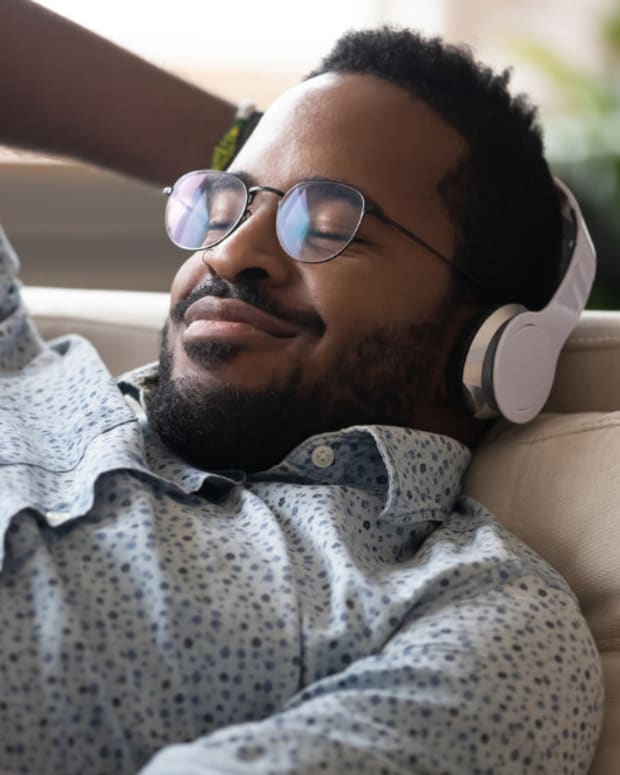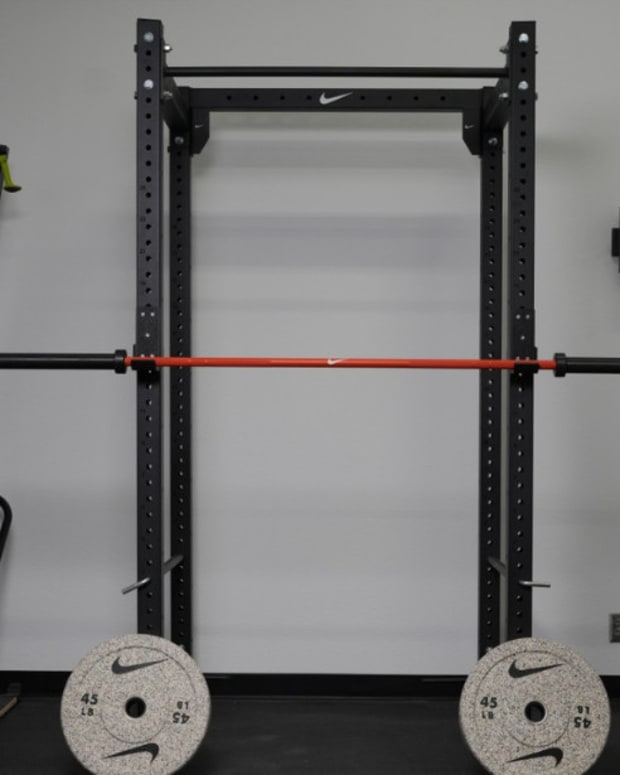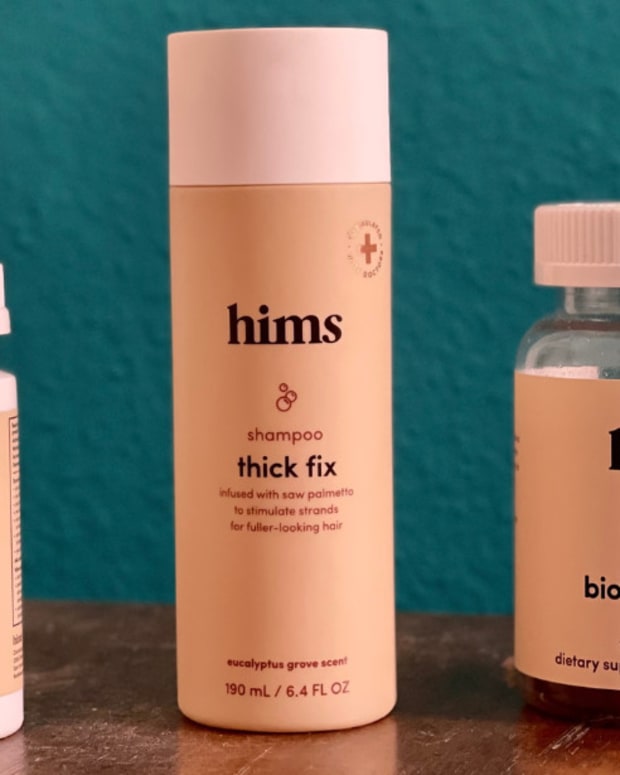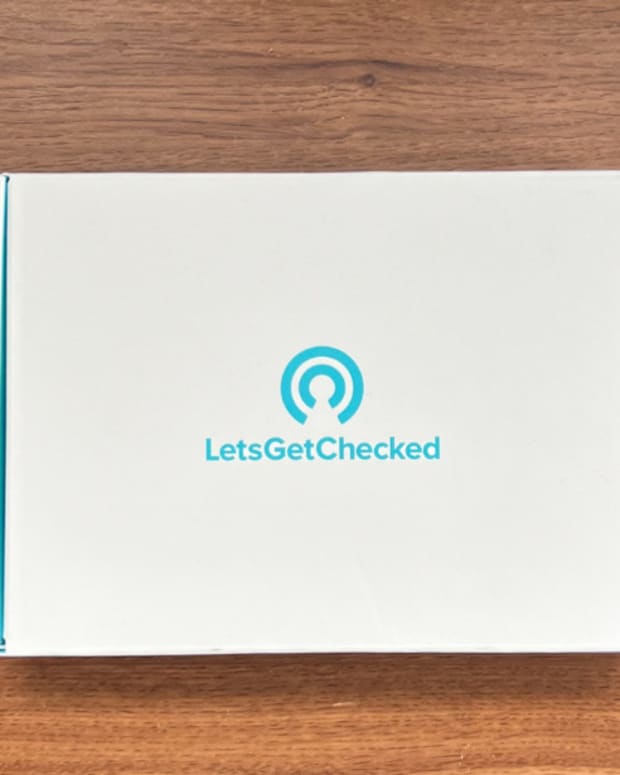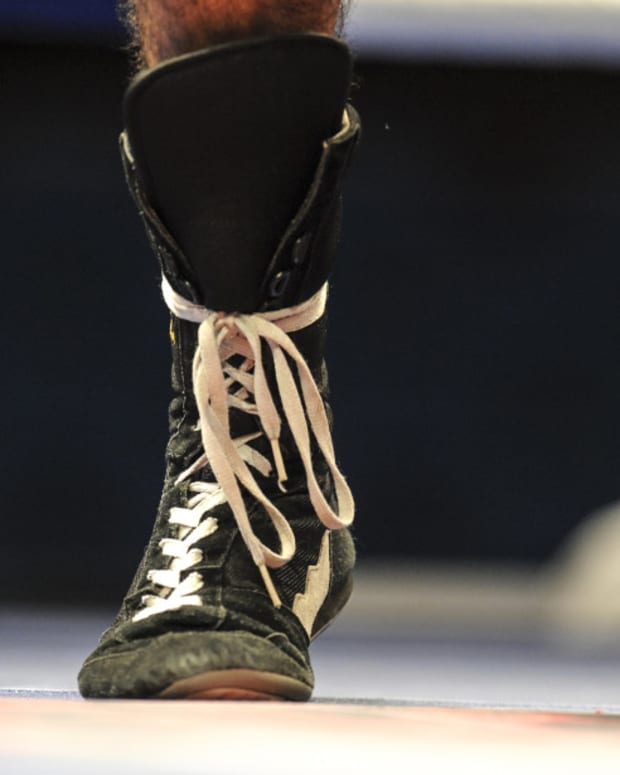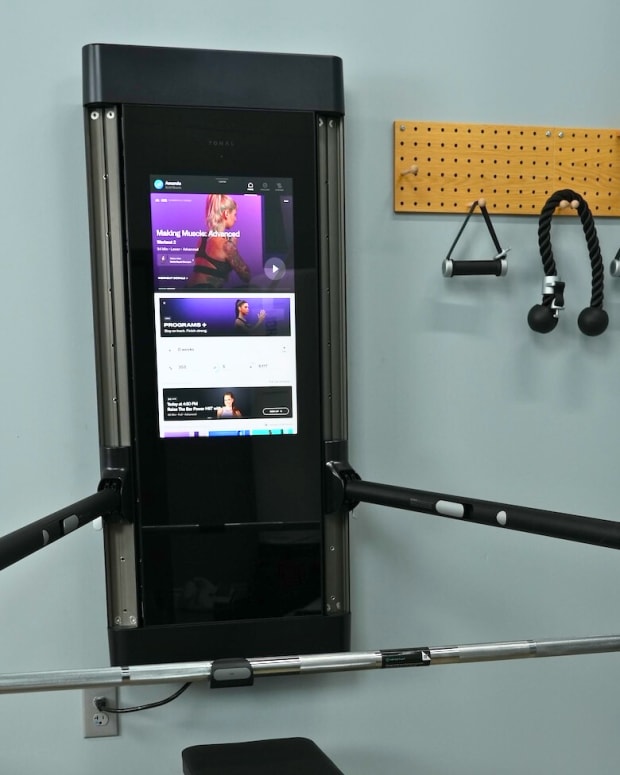The 10 Best Orthopedic Shoes of 2024
The products featured in this article have been independently reviewed. When you buy something through the retail links on this page, we may earn commission at no cost to you, the reader. Sports Illustrated editorial staff are not involved in the creation of this content. Learn more here.
If you suffer from foot pain, it can be difficult to figure out what shoes will help rather than hurt during your workouts. And while it’s always best to see a podiatrist if you can, investing in an orthopedic shoe can make quite a big difference. Orthopedic shoes differ from sneakers or athletic shoes in that they are generally sturdier, wider and more supportive. Even though they may not look as comfy as a squishy memory foam shoe, sometimes the support is exactly what you need to alleviate pain and stop the problem at the source.
And orthopedic shoes aren’t just for those with chronic conditions, if you have a job that requires it, they are great shoes for standing all day, or those that may be in search of some pain-relief due to previous poor shoe choices. Whatever your reason, we know that it can be challenging to find shoes—particularly when shopping online. To help you out, we gathered up nine of our favorites that vary in type, style and budget to give you the best orthopedic shoes of 2024. If you think orthopedic shoes might be too supportive for you but are still looking for something comfortable, check out our top picks for running shoes and our favorite training shoes.
Our Picks for the Best Orthopedic Shoes:
- Best Overall Orthopedic Shoes: Kuru Quantum
- Best Orthopedic Shoes For Walking: Allbirds Tree Flyer 2
- Best Orthopedic Shoe for Daily Use: adidas NMD_R1
- Best Orthopedic Shoes For Wide Feet: Hoka Gaviota 5
- Best Orthopedic Shoes For Plantar Fasciitis: Kuru Footwear Atom
- Best Orthopedic Running Shoes: adidas RunFalcon 3 CloudFoam Low Running Shoes
- Best Orthopedic Shoes For Men: Hoka Bondi 8
- Best Orthopedic Shoes For Women: Nike Structure 25
- Best Women’s Orthopedic Dress Shoes: Dansko Fawna Mary Jane Sandals
- Best Men’s Orthopedic Dress Shoes: Dr. Comfort Stallion Mens
Best Overall Orthopedic Shoes: Kuru Quantum
Key Features:
- Price: $160
- Available Colors: Nine
- Sizes: 5–12
The Kuru Quantum has a breathable upper, roomy toe box, cushioned heel and a wide, stable base for those who need more support and comfort. This shoe has a firm rubber outsole that helps you feel secure and stable with every step. The roomy toe box is great for those who like a bit more room in the front or may suffer from some foot conditions like bunions, neuromas or hammer toes. These shoes have a bit more heft to the upper, giving them a more structured feel on top of the foot, though the integration of mesh parts helps keep the feet much cooler than an all-leather model. This shoe tends to run on the wide side and comes in both wide and medium widths.
Pros:
- Very supportive
- Wide toe box and comes in medium and wide widths
- Molded insole
Cons:
- Can feel a bit clunky
Best Orthopedic Shoes For Walking: Allbirds Tree Flyer 2
Key features:
- Price: $160
- Available Colors: Six
- Sizes: 8–14 men’s, 5–11 women’s
The Tree Flyer 2 by Allbirds curves upward from the midfoot to the heel and from the midfoot to the toe in a gentle, continuous arc that promotes natural gait. The heel counter, located on the back of the heel area, extends up the back of the upper for support and stability to the rear of the foot. The zonal knit upper is patterned to promote air circulation at the forefoot and midfoot, where ventilation is crucial. For optimal motion control, the rubber outsole has a horizontal lug pattern throughout the forefoot, midfoot and heel to enhance grip. These shoes have a SwiftFoam midsole, a more sustainable cator oil-based material that is lightweight and provides cushioning and shock absorption while you walk.
Pros:
- Supportive midsole is made from sustainable materials
- Heel counter for stability
- Front pull tab and heel tab for easy on and off
Cons:
- May be too narrow for wide feet
Best Orthopedic Shoe For Daily Use: adidas NMD_R1
Key Features:
- Price: $160
- Available Colors: 25
- Sizes: 5–14
While adidas may be known for its athletic shoes, casual sneakers have also been a staple of the brand for decades. The adidas NMD_R1 is designed to give your foot maximum support for daily wear. The upper is made of durable textiles, including a yarn that’s a blend of recycled ocean plastic and recycled polyester, plus a hard-wearing rubber outsole.
Related Post: Our Tested Review of the Iconic adidas Stan Smith Sneakers
The key to support and comfort with this shoe is the adidas Boost midsole. The Boost technology gives you energy return (the springy feeling when you step) and absorbs some of the impact your joints may bear as you stand or walk. Reviewers say the NMD_R1 has a snug, but not-too-tight fit, and the shoe boasts a 4.6/5 star rating with almost 5,500 reviews on the adidas website.
Pros:
- Comfortable and supportive shoe with a snug fit around the foot
- Boost midsole absorbs impact as you stand or walk
- 25 colors available for the men’s style and 31 colors available for the women’s style
Cons:
- Some reviewers commented that the sizes run bigger than usual
Best Orthopedic Shoes For Wide Feet: Hoka Gaviota 5
Key features:
- Price: $175
- Available Colors: Three
- Sizes: 7–15 men’s, 5–12 women’s
If you have wide feet, the Hoka Gaviota 5 comes in regular and wide width options and offers half sizes. It has a wide toe box to allow plenty of space for toe splay and is ideal for those who experience bunions, hammertoes or ingrown toenails when wearing narrow shoes. It has H-Frame technology to keep your feet stable and prevent excessive inward roll, and the padded tongue and collar prevent friction and secure the foot.
The thick midsole is compression-molded EVA foam (CMEVA), known for its lightweight and cushioning properties. This material helps absorb impact and energy return and feels comfortable, even after a long day of walking or standing.
Pros:
- Padded tongue and collar
- Wide toe box and wide width options available
- Plush and stable
Cons:
- Midsole foam may be too soft for some
Best Orthopedic Shoes For Plantar Fasciitis: Kuru Footwear Atom
Key Features:
- Price: $160
- Available Colors: 11
- Sizes: 5–12
The Kuru Atom shoes were made with comfort and ergonomics at the forefront of their design. They have a patented triple layer design which includes a light, shock-absorbing EVA foam, a sole that hugs and protects the heel and a dual-density foam insole which provides arch support. Unlike most shoes which have a flat insole, this one gives you support from within and feels like a comfortable hug on your foot which is exactly what you need to help alleviate symptoms of plantar fasciitis.
Related Post: The Best Shoes for Plantar Fasciitis
Since the insole is built in, this also means you won’t have to go hunting for an additional insole to stick in your shoe which is usually a challenge of its own. These shoes also have a breathable mesh upper which will keep your feet cool and dry even in the hot months.
Pros:
- Insole forms to shape of foot
- Breathable upper
- Cushioned feel
Cons:
- Not great in wet conditions
Best Orthopedic Running Shoes: adidas RunFalcon 3 CloudFoam Low Running Shoes
Key features:
- Price: $65
- Available Colors: 7
- Sizes: 6.5–14
If you have been running for a while and are a severe overpronator, chances are you have owned a stability or motion control shoe in the past. But stability shoes have come leaps and bounds from the stiff ol’ clunkers that were still prevalent even a couple of years ago. The adidas RunFalcon 3 CloudFoam Low Running Shoes have a responsive midsole, flexible upper and a grippy rubber outsole that keeps the feet connected, without compromising on cushioning and support.
The Cloadfoam midsole molds to the foot to create a snug fit reducing discomfort and helps distribute body weight evenly across the foot. This cushioning is lightweight, absorbing impact while keeping the feet stable during running. The flexible rubber outsole moves and bends as you run, and the textile lining and upper promote airflow to keep you cool.
Pros:
- Cloudfoam midsole provides support and energy return
- Breathable textile upper with overlays to reduce wear
- Lightly padded collar and tongue to enhance comfort and reduce friction
Cons:
- Weight of 19.5 ounces may feel heavy to some
Best Orthopedic Shoes For Men: Hoka Bondi 8
Key features:
- Price: $165
- Available Colors: 21
- Sizes: 7–16 men’s, 5–12 women’s
Though the Hoka Bondi doesn’t technically classify as an orthopedic shoe, the design lends itself to being a lifesaver for many who suffer from everything from foot issues to back pain. The main feature of this high-cushion running shoe is the super thick EVA foam midsole. This gives the shoe its signature plush feel, and since you sit down in the foam a bit, it also hugs around the foot and provides some additional stability. The Bondi also has a bit of a rocker, which means that it helps you roll through your foot, propelling you forward as you walk and enforcing healthy biomechanics. Since this is a running and walking shoe, it is also very lightweight and has a super breathable upper—two essential features when wearing it for exercise.
Pros:
- Super cushioned
- Lightweight
- Rocker promotes proper gait
Cons:
- Pretty tall sole feels clunky to some
Best Orthopedic Shoes For Women: Nike Structure 25
Key Features:
- Price: $140
- Available Colors: 5
- Sizes: 5–12, including half sizes and wide options
For women who like to wear high heels, you know that sometimes your most fashionable footwear can cause foot pain or issues. Experts recommend wearing a comfortable, supportive shoe, especially after a day of wearing a pair of heels. While technically a running shoe, the Nike Structure 25 is designed to be highly supportive, making it our pick for the best orthopedic shoes for women.
Nike says the Structure 25 was designed with intentionally placed cushioning to keep your foot secure in your shoe. These sneakers have extra foam and are made with softer materials than previous versions to provide a more supportive and comfortable fit. Plus, an increased rocker is included to add stability to every step you take. The Structure 25 has a wide toe box paired with a structured heel, two things orthopedists say women should look for in a shoe.
Pros:
- Lots of cushioning to help reduce the amount of impact when you walk or run
- Highly supportive design provides stability and security for your foot
- Wide and half sizes available
Cons:
- Does not provide a lot of energy return, meaning they won’t add a spring in your step like some running shoes
Best Women’s Orthopedic Dress Shoes: Dansko Fawna Mary Jane Sandals
Key Features:
- Price: $140
- Available Colors: 2
- Sizes: 5.5–13
Though orthopedic shoes are so often reduced to chunky, unfashionable sneakers, that is no longer the case. And while we don’t recommend pulling out the flip flops or high heels either, there are some options that can look great and not kill your feet.
These Mary Jane sandals by Dansko are both supportive and cute. They have a classic design that goes with any outfit, and the slight one and a half inch heel makes them feel more dressy than a flat without causing any instability. They have a molded EVA footbed, and steel shank which provide you with both comfort and support, and the upper is made with 100 percent leather which means if taken care of properly, they can last you for years.
Pros:
- Cushioned insole is very comfortable
- Made with quality materials
- Classic look
Cons:
- Limited color options
Best Men’s Orthopedic Dress Shoes: Dr. Comfort Stallion Men's
Key Features:
- Price: $101
- Available Colors: 2
- Sizes: 6–15
Whether you’re attending an event or going into the office, there’s a good chance that you have experienced your fair share of uncomfy dress shoes. But you don’t have to feel bad to look good. These 100 percent leather shoes are a classic loafer style that are so comfortable you won’t be missing your sneakers. They have removable insoles which can be replaced with custom orthotics if you need them, but the insoles themselves actually have gel pods and extra cushioning from heel to toe.
The front of the shoe has a protective toe box which helps the shoe keep its shape and helps to prevent any stubbing of the toes. While these shoes are excellent for all kinds of foot issues and injuries, they were specifically designed for diabetics, so they have an extra wide width and depth which makes them super supportive and complementary to inserts.
Pros:
- Works great with orthotics
- Made with quality leather
- Great price
Cons:
- May be too wide for narrow feet
What Are Orthopedic Shoes?
Though orthopedic shoes may look similar enough to regular shoes on the outside, they do have some features that make them unique.
These shoes are specifically designed to improve biomechanical foot function. They usually have wider footbeds than a traditional shoe and they offer high support and motion control. These are most common for people that have injuries, deformities or abnormalities as they can help to correct foot movement as much as possible.
They also will often have a large, flat shank which provides a sturdy base for custom insoles—something commonly paired with orthopedic shoes as it gives you a fit that is personalized to your needs.
What Conditions Do Orthopedic Shoes Help?
Orthopedic shoes are common for a number of conditions, but they can even be worn by those that simply feel they want a more solid, supportive feeling shoe.
One of the most common conditions is severe over-pronation. Since these orthopedic shoes either come with significant arch support or work well with insoles or orthotics, they are commonly used to help correct severe collapsing of the arch.
Orthopedic shoes are also commonly worn by diabetics or those that suffer from neuropathy. Due to wide toe boxes and a firm sole, these shoes allow the foot to sit comfortably without feeling squeezed, and the lack of bending in the toe helps to prevent discomfort.
Orthopedic shoes can also help to ease the pain and sometimes even prevent surgery for severe foot issues like neuromas, bone spurs, bunions and more. It should be noted that while orthopedic shoes can make a significant difference for some, everyone will have varying results based on their condition.
Orthotics vs. Orthopedic Shoes
Orthotics and orthopedic shoes can serve a similar—if not the same—purpose, and you may find success with using either one or both of them together.
Orthotics are inserts that you place into a shoe after removing the insole. They usually have a deep heel cup, some sort of rigid arch and some will have a padded layer on top for comfort. These are most commonly used to treat ailments like plantar fasciitis, calluses, corns, shin splints, diabetic feet and tendonitis.
Orthopedic shoes provide similar support with a rigid arch, firm sole and motion control. These generally treat bunions, hammertoes, heel spurs, plantar fasciitis, diabetes, arthritis, flat feet, swollen feet and those that recently had foot surgery.
There is definitely significant overlap with the maladies that orthotic inserts and orthopedic shoes treat, but the main difference is that orthotics can be removed and switched between shoes while orthopedic shoes are simply a single pair of shoes.
The downside with orthotics is that they may feel different in every shoe you put them in as the drop, width, and overall design will vary from shoe to shoe. An orthopedic shoe, however, will feel just the same every time you put it on.
How To Choose the Best Orthopedic Shoes for You
When looking for orthopedic shoes you will want to consider a couple key features. One of the most important is how much support you need. Many orthopedic shoes will have a very rigid arch. However, if you already have a high arch you may not need as much stability, so you will likely want to opt for something that is closer to a neutral fit.
Also consider the type of shoe that you are looking for. While clunky white leather shoes are usually what comes to mind when one thinks orthopedic, this isn’t true for every shoe. There are now walking shoes, running shoes and even dress shoes that have orthopedic components that will complement both your arches and aesthetic.
How We Chose the Best Orthopedic Shoes
To choose the best orthopedic shoes we researched the most popular models on the market. We considered reviews left by those that purchased the items to get a first hand look at how they performed in the real world. We also consulted trusted sources that conducted tested reviews to get the inside scoop on the best orthopedic shoes available today.
Orthopedic Shoes FAQs
What is the difference between orthopedic shoes and regular shoes?
Orthopedic shoes offer higher support, greater stability and generally more room in the toe box. They are also made with more/stiffer material so they tend to be a bit heavier and more supportive.
What kind of shoes do orthopedic doctors recommend?
Orthopedic doctors tend to recommend shoes with decent arch support and cushioning as well as a proper fit. This can mean something different for everyone, so while some may be fine in a neutral running shoe, others may require an orthopedic shoe plus an orthotic.
How do I know if I need orthopedic shoes?
The best way to know if orthopedic shoes are right for you is to ask your doctor, but if you feel that your current shoes are not giving you ample support, then they could be the right fit for you. And as simple as it sounds, when you try them on, comfortable shoes are generally good shoes.
Do orthopedic shoes really work?
Orthopedic shoes definitely work. You will want to make sure that you have a proper fit, plus the correct type of shoe for your foot to ensure that they will actually have a positive impact on your feet.
Final Thoughts
If you feel that you could benefit from an orthopedic shoe, it’s probably worth giving it a shot. Especially if you have found that traditional high-cushioned running shoes and walking shoes aren’t cutting it for you, an orthopedic model may provide just the support that you need to feel your best. And while it’s always best to get fit in person, you can get a pretty good idea of what you need from research online and talking about the best options with your doctor.
Prices are accurate and items in stock as of publish time.













